Radeon HD 2400: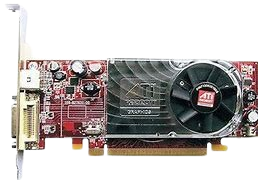
The Radeon HD 2400 was one of the older budget GPUs by AMD, dating back around 2007. Made on a 65nm process, it had basic support for DirectX 10 which should make it useful enough for basic multimedia and light gaming tasks of its time. With 40 stream processors and up to 256 MB of VRAM, HD 2400 was destined not that much for demanding tasks but for the affordable lifting of an old card in old systems. Its low power consumption and implementable small form factor are quite fitting for a compact desktop, giving only a slight performance edge over basic onboard graphics solutions.
Radeon HD 3450: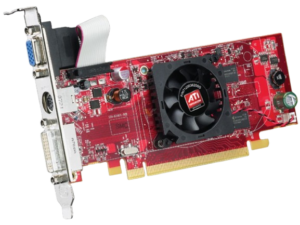
This was also an early 2008 release and serves as an entry card for the budget market — for users who are interested in the most cost-effective graphics card. It was released to the market at the start of 2008 and possesses 40 stream processors, uses Video RAM up to 512MB, whilst supporting DirectX 10.1. That may be insufficient to run just about any modern game, but the HD 3450 fares quite handsomely in multimedia tasks like playing high-definition video and even some photo manipulation. Its low profile and passive cooling option made it a big favorite because of HTPCs and small form factor builds. For its time, it offered a cost-effective solution to the end-user needing only a simple graphics upgrade.
AMD Radeon HD 6450: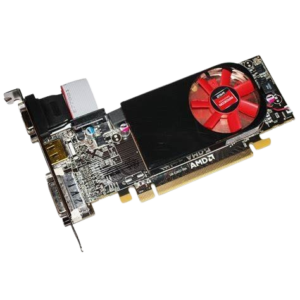
The 2011 Radeon HD 6450 was a low-end GPU targetted at casual users and HTPC setups. It packed 160 Stream processors and up to 1GB of DDR3 or GDDR5 memory—supporting DX11 and letting budget systems have access to far more modern Graphics. Besides, powered with a very modest amount of power, the card features a fanless scheme, which makes it extremely quiet for everyday computing with HD video playback and light gaming. While not being a great performer for anything heavy, like going through endless hours of high-definition video encoding, the HD 6450 was decent enough and able to offer a viable, very cheap solution for everyday users wanting to spruce up their systems’ graphics performance slightly. This card pointed at a possible affirmation of that notion in the HD 6450’s favor.
AMD Radeon HD 7470: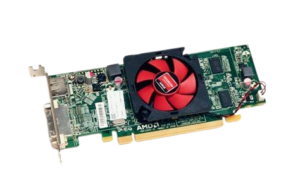
Effectively a re-badge of the HD 6450, the HD 7470 was an HD 6450 that was announced in 2012 for. It used the same 160 stream processors and had DirectX 11 support, so basic multimedia tasks and very light gaming should be fine. Up to 1 GB of DDR3 memory provided the HD 7470 with some performance over integrated solutions, but gaming was off the table. All factors considered, this actually made the Raspberry Pi well suited for small-factor PCs with very low power draws and a compact design; hence, a very cost-effective upgrade to an integrated graphics platform for everyday use.
Radeon R5 230: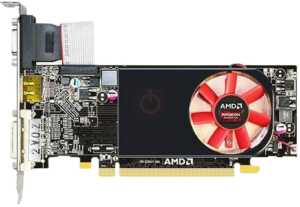
The Radeon R5 230 was, in general, a budget-class graphics card. Released in 2014, it has up to 160 working stream processors and a maximum of 1 GB of DDR3 memory inside. New at that time was full support for DirectX 11.1. This way, it won’t give a gaming user the kick required but will simply cruise through while web browsing, video playback, and even light photo editing. A low-profile design and passive cooling make it quite the good match for compact, silent builds. Finally, for those who really wanted or needed an option, the R5 230 gave them a budget-friendly way to boost performance over integrated graphics.
Radeon RX 550X: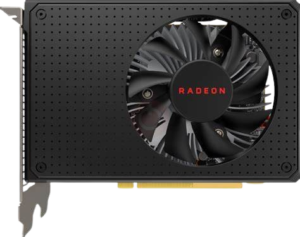
The Radeon RX 550 of 2017 was more of a repeat for AMD’s low-end on the GPU side of the business. The card features 512 stream processors and supports up to 4GB of GDDR5 memory and DirectX 12 independently, all towards better performance within budget in games. Running eSports titles and slightly older AAA gamest on reasonable settings and 1080p h, the RX 550 was a pretty great addition to entry-level gaming rigs. This made it fit for home theater PCs and small factor PCs, with low power consumption and compact design. The RX 550 was also an excellent choice for those with a budget for gaming.
GPU RX 6400:
The AMD Radeon RX 6400 is actually the very latest entry solution for graphics chips from AMD; although recently launched in 2022, with some modern and new features, it is obtainable at a very attractive price. Built to the RDNA 2 architecture, it has only 768 stream processors and 4GB of GDDR6 memory. DirectX 12 Ultimate is supported, which means support for most new titles. The RX 6400 should be targeted at budget gamers finally to get the card that helps them limp through on medium settings for the popular titles operating at 1080p. It also had a rather seldom feature in low-end GPUs: hardware-accelerated ray tracing. With very low power consumption and efficient design, this makes the RX 6400 a perfect choice for small form factor builds or a budget-friendly entry-level gaming PC.
